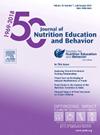不同种族/民族的成人2型糖尿病患者的烹饪药物干预试验
IF 2.3
3区 医学
Q2 EDUCATION, SCIENTIFIC DISCIPLINES
引用次数: 0
摘要
目的:评估虚拟烹饪医学项目是否能改善成人2型糖尿病患者的健康饮食、糖化血红蛋白(HbA1c)和相关变量。设计:混合方法,仅干预的试点研究。设置:在教学厨房通过视频会议上课,参与者在家做饭。参与者:来自德克萨斯州初级保健系统的104名患者。干预措施:由营养师领导的五期课程(西班牙语和英语)。主要观察指标:HbA1c。次要结果包括“我的盘子”知识、自我效能、健康饮食和烹饪行为、糖尿病自我管理、感知健康和血压。分析:采用多水平混合效应回归分析治疗前、治疗后及6个月随访时的变化。框架分析法分析干预后访谈。结果:具有完整测试后数据的参与者(n = 61)显示具有统计学意义(P)。结论和含义:我们看到健康饮食和烹饪行为以及HbA1c的改善。虽然需要进一步严格的测试,但该计划可以作为2型糖尿病患者的简短干预措施纳入临床实践。本文章由计算机程序翻译,如有差异,请以英文原文为准。
Testing of a Culinary Medicine Intervention for Racially/Ethnically Diverse Adults With Type 2 Diabetes
Objective
Assess if a virtual culinary medicine program improves healthy eating, glycosylated hemoglobin (HbA1c), and associated variables among adults with type 2 diabetes.
Design
Mixed-methods, intervention-only pilot study.
Setting
Classes via video conferencing from the teaching kitchen, with participants cooking from their homes.
Participants
One hundred and four patients from a Texas primary care system.
Interventions
Five-session program (Spanish and English) led by a dietitian.
Main Outcome Measures
HbA1c. Secondary outcomes included MyPlate knowledge, self-efficacy, healthy eating and cooking behaviors, diabetes self-management, perceived health, and blood pressure.
Analysis
Multilevel mixed-effects regression to analyze changes at pretreatment, posttreatment, and 6-month follow-up. Framework analysis to analyze postintervention interviews.
Results
Participants with complete posttest data (n = 61) demonstrated statistically significant (P <0.05) improvements in MyPlate knowledge, cooking self-efficacy, servings of fruits and vegetables, frequency of healthy food intake, shopping, cooking and eating behaviors, diabetes self-management, and perceived health, compared with pretest. HbA1c levels showed statistically significant reductions from pretest to posttest (P = 0.02) and at 6-month follow-up (P <0.001). Participants reported high satisfaction and sustained new habits.
Conclusions and Implications
We saw improvements in healthy eating and cooking behaviors and HbA1c. While further rigorous testing is needed, this program could be incorporated into clinical practices as a brief intervention for patients with type 2 diabetes.
求助全文
通过发布文献求助,成功后即可免费获取论文全文。
去求助
来源期刊
CiteScore
4.20
自引率
11.50%
发文量
379
审稿时长
44 days
期刊介绍:
The Journal of Nutrition Education and Behavior (JNEB), the official journal of the Society for Nutrition Education and Behavior, is a refereed, scientific periodical that serves as a global resource for all professionals with an interest in nutrition education; nutrition and physical activity behavior theories and intervention outcomes; complementary and alternative medicine related to nutrition behaviors; food environment; food, nutrition, and physical activity communication strategies including technology; nutrition-related economics; food safety education; and scholarship of learning related to these areas.
The purpose of JNEB is to document and disseminate original research and emerging issues and practices relevant to these areas worldwide. The Journal of Nutrition Education and Behavior welcomes evidence-based manuscripts that provide new insights and useful findings related to nutrition education research, practice and policy. The content areas of JNEB reflect the diverse interests in nutrition and physical activity related to public health, nutritional sciences, education, behavioral economics, family and consumer sciences, and eHealth, including the interests of community-based nutrition-practitioners. As the Society''s official journal, JNEB also includes policy statements, issue perspectives, position papers, and member communications.

 求助内容:
求助内容: 应助结果提醒方式:
应助结果提醒方式:


